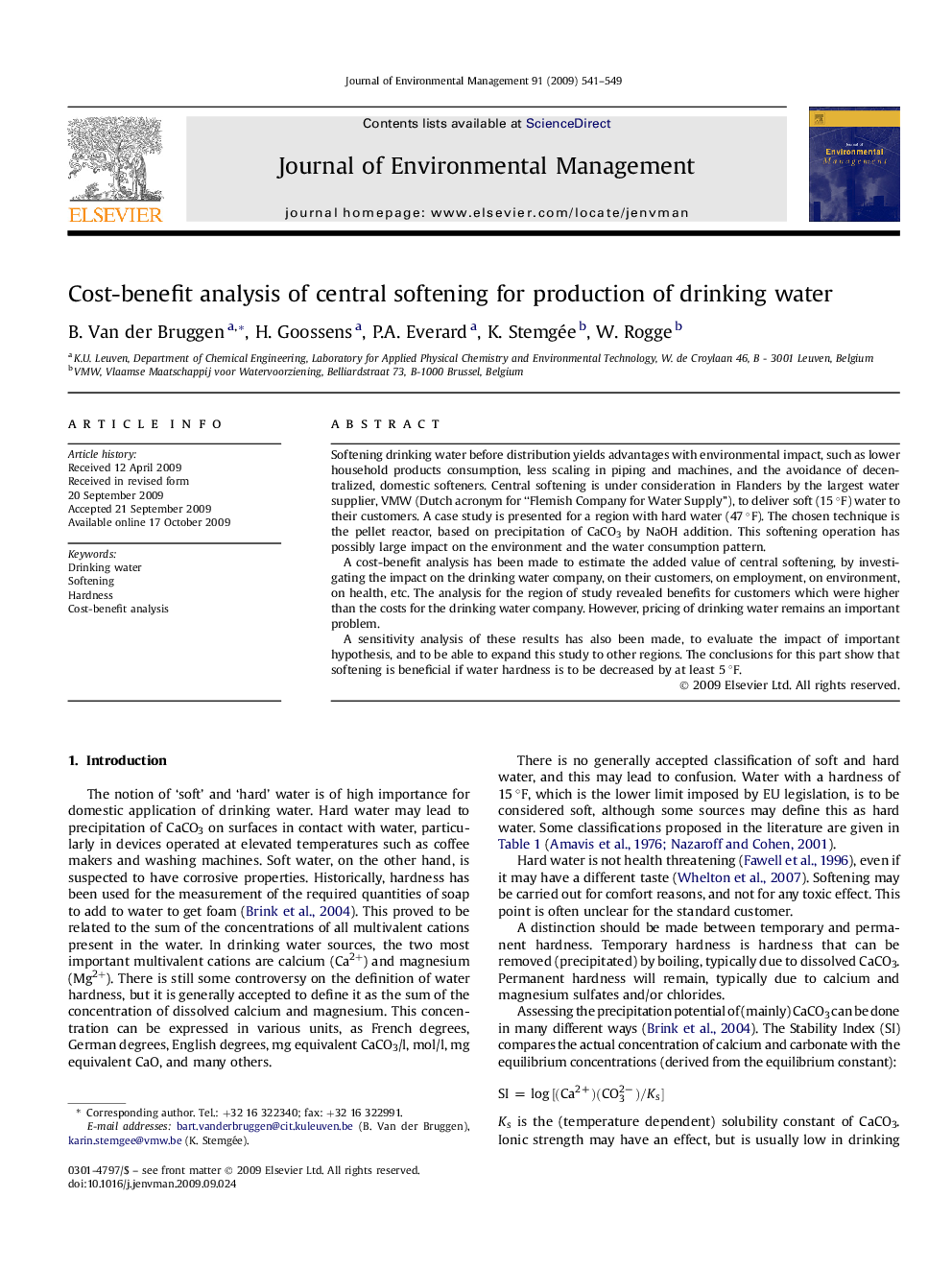| Article ID | Journal | Published Year | Pages | File Type |
|---|---|---|---|---|
| 1057830 | Journal of Environmental Management | 2009 | 9 Pages |
Softening drinking water before distribution yields advantages with environmental impact, such as lower household products consumption, less scaling in piping and machines, and the avoidance of decentralized, domestic softeners. Central softening is under consideration in Flanders by the largest water supplier, VMW (Dutch acronym for “Flemish Company for Water Supply”), to deliver soft (15 °F) water to their customers. A case study is presented for a region with hard water (47 °F). The chosen technique is the pellet reactor, based on precipitation of CaCO3 by NaOH addition. This softening operation has possibly large impact on the environment and the water consumption pattern.A cost-benefit analysis has been made to estimate the added value of central softening, by investigating the impact on the drinking water company, on their customers, on employment, on environment, on health, etc. The analysis for the region of study revealed benefits for customers which were higher than the costs for the drinking water company. However, pricing of drinking water remains an important problem.A sensitivity analysis of these results has also been made, to evaluate the impact of important hypothesis, and to be able to expand this study to other regions. The conclusions for this part show that softening is beneficial if water hardness is to be decreased by at least 5 °F.
